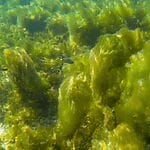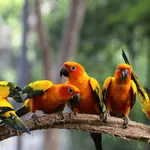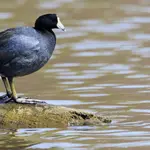Coral reefs are vibrant underwater ecosystems that support an astonishing diversity of marine life. These complex habitats are home to countless animals that have adapted to thrive in the intricate web of life found within coral reefs.
From colorful fish to fascinating invertebrates, and even mammals like dugongs and dolphins, the array of creatures that call coral reefs home is truly remarkable.
In this article, we will explore the various animals that live in coral reefs, their unique adaptations, and the important roles they play in maintaining the balance of these delicate ecosystems.
Quick Answer: Coral reefs are home to diverse marine life, including colorful fish, invertebrates like coral polyps and sea anemones, sea turtles, dugongs, and dolphins.
Key Takeaways:
- Coral reefs are home to an incredible diversity of marine life, including colorful fish, bizarre invertebrates, sea turtles, and even mammals like dugongs and dolphins.
- Many coral reef animals have developed fascinating symbiotic relationships and unique adaptations that allow them to thrive in these complex ecosystems.
- Coral reefs and their inhabitants face serious threats from climate change, overfishing, pollution, and invasive species, highlighting the urgent need for conservation efforts to protect these vital ecosystems.
Animals That Live In Coral Reefs
Coral reefs are among the most diverse and fascinating ecosystems on Earth, teeming with an incredible array of marine life. These underwater wonderlands support an estimated 25% of all marine species, despite covering less than 1% of the ocean floor.
The complex structures formed by coral polyps provide shelter, food, and breeding grounds for countless creatures, making coral reefs essential to the survival of many species. From colorful fish to bizarre invertebrates, and even reptiles and mammals, the biodiversity found in coral reefs is truly astounding.
Fish
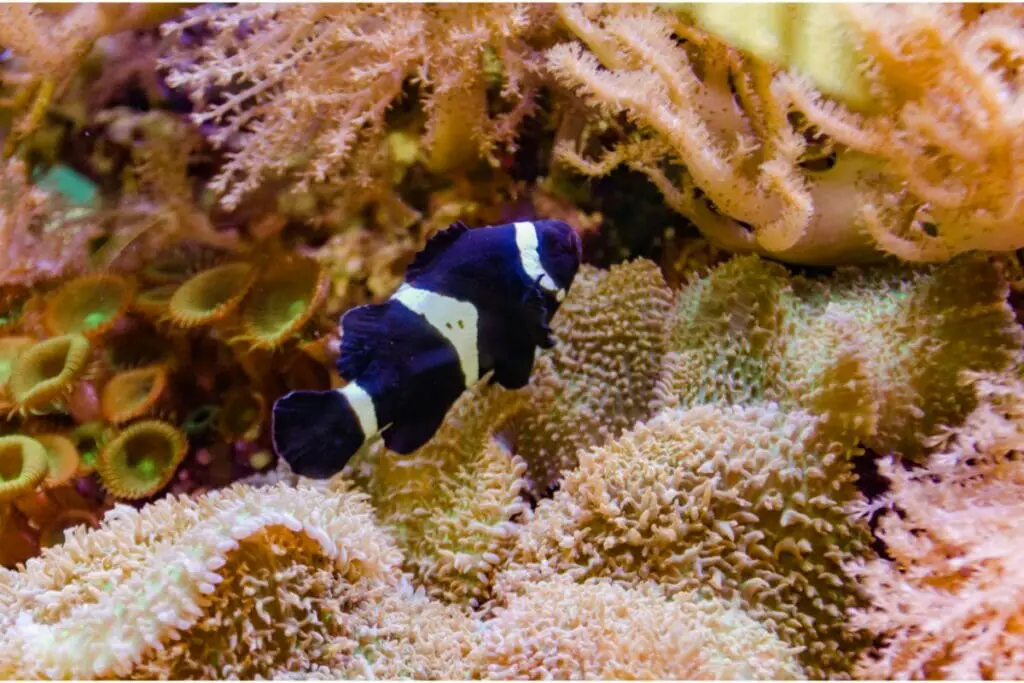
Coral reefs are home to an astonishing variety of fish species, each with its own unique characteristics and roles within the ecosystem. The vibrant colors and patterns of reef fish are not just for show; they serve as camouflage, warning signals, or even communication tools.
Clownfish, made famous by the movie “Finding Nemo,” have a symbiotic relationship with sea anemones, finding protection among their stinging tentacles. Angelfish, with their flattened bodies and striking colors, are known for their graceful swimming and monogamous mating habits.
Butterflyfish, aptly named for their wing-like fins and bright patterns, feed on coral polyps and small invertebrates. Parrotfish play a crucial role in maintaining the health of coral reefs by consuming algae that would otherwise smother the corals.
Other notable reef fish include triggerfish, damselfish, wrasse, grouper, snapper, and goby, each contributing to the intricate web of life within the coral reef ecosystem.
Invertebrates
While fish may be the most conspicuous inhabitants of coral reefs, invertebrates are the true backbone of these ecosystems. Coral polyps themselves are tiny invertebrates that secrete calcium carbonate to build the reef structure.
These polyps have a symbiotic relationship with algae called zooxanthellae, which provide them with nutrients through photosynthesis. Other invertebrates found in coral reefs include sea anemones, close relatives of coral polyps that use their stinging tentacles to capture prey.
Sponges, ancient and simple animals, filter water and provide shelter for many small creatures. Crabs, shrimp, and lobsters are crustaceans that scavenge for food and help keep the reef clean. Sea urchins and starfish are echinoderms that graze on algae and help maintain the balance of the reef ecosystem.
Sea cucumbers, another type of echinoderm, help recycle nutrients by consuming detritus on the seafloor. Giant clams, the largest bivalve mollusks in the world, filter water and provide a unique habitat for other organisms within their shells.
Reptiles
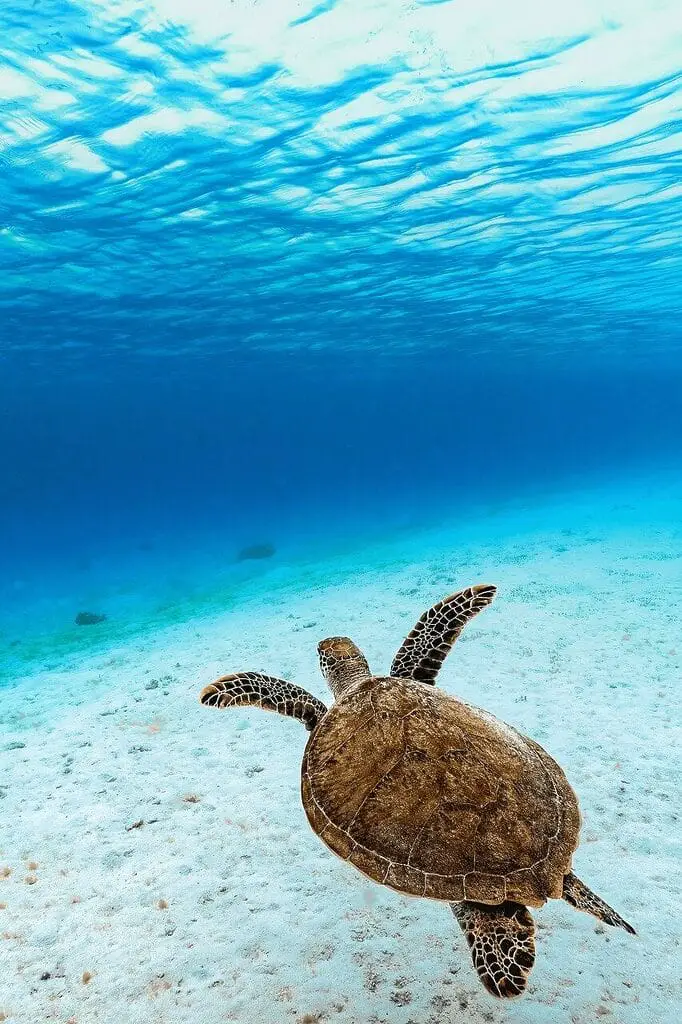
While reptiles may not be the first animals that come to mind when thinking of coral reefs, several species call these ecosystems home. Sea turtles, including green sea turtles, hawksbill sea turtles, and loggerhead sea turtles, rely on coral reefs for food and shelter.
These ancient mariners graze on seagrass and algae, helping to maintain the health of the reef. Sea turtles also use coral reefs as resting and cleaning stations, where fish remove parasites from their shells. Sea snakes, another group of marine reptiles, are adapted to life in the ocean with their paddle-like tails and salt-excreting glands.
These venomous snakes hunt for fish and eels among the coral branches, adding another layer of complexity to the reef food web.
Mammals
Although mammals are not as common in coral reefs as fish and invertebrates, some species have adapted to life in these ecosystems. Dugongs, gentle giants related to manatees, graze on seagrass beds near coral reefs.
These slow-moving herbivores play a crucial role in maintaining the health of seagrass meadows, which in turn support the reef ecosystem. However, dugongs are vulnerable to extinction due to habitat loss, hunting, and entanglement in fishing gear. Various species of dolphins also frequent coral reef areas, using their intelligence and echolocation abilities to navigate and hunt for fish.
Dolphins are highly social animals, often forming close-knit family groups and engaging in playful behaviors. Their presence near coral reefs adds to the overall biodiversity and charm of these underwater oases.
Fascinating Facts About Coral Reef Animals
Coral reefs are not only visually stunning but also home to an incredible array of animals with fascinating characteristics and behaviors. From the intricate symbiotic relationships between species to the unique adaptations that allow them to thrive in this environment, coral reef animals are truly remarkable.
Their vibrant colors and patterns serve essential purposes, such as camouflage, warning signals, and mate attraction. Moreover, these creatures play crucial roles in maintaining the delicate balance of the coral reef ecosystem.
Symbiotic Relationships
One of the most intriguing aspects of coral reef animals is the complex web of symbiotic relationships that exist between various species. Perhaps the most well-known example is the relationship between clownfish and sea anemones.
Clownfish, made famous by the movie “Finding Nemo,” find protection among the stinging tentacles of sea anemones, which would normally harm other fish. In return, the clownfish’s waste provides nutrients for the anemone, and the fish’s movement helps circulate water around the anemone.
Another crucial symbiotic relationship in coral reefs is that between coral polyps and zooxanthellae algae. The algae live within the tissues of the coral polyps, providing them with energy through photosynthesis. In exchange, the coral polyps offer the algae a safe place to live and access to essential nutrients. This relationship is so vital that without the algae, many coral species would struggle to survive.
Other fascinating symbiotic relationships in coral reefs include those between cleaner shrimp and fish. Cleaner shrimp set up “cleaning stations” where fish come to have parasites and dead skin removed. The shrimp get a meal, and the fish stay healthy and parasite-free.
Unique Adaptations
To thrive in the competitive and sometimes harsh environment of coral reefs, animals have developed a wide range of unique adaptations. Octopuses and cuttlefish, for example, are masters of camouflage.
They can change the color and texture of their skin to blend in with their surroundings, making them nearly invisible to both predators and prey. Some species can even mimic the appearance of other animals, such as venomous sea snakes, to deter potential threats.
Another animal with a remarkable adaptation is the lionfish. These striking fish have venomous spines that can deliver a painful sting, deterring predators and allowing them to hunt smaller fish with ease. Lionfish are not native to many of the coral reefs they now inhabit, and their presence can disrupt the natural balance of these ecosystems.
Parrotfish have a unique adaptation that allows them to play a vital role in the health of coral reefs. These fish have powerful jaws and teeth that enable them to crush and eat coral, which they then excrete as sand. In fact, a single parrotfish can produce up to 200 pounds of sand each year! By grazing on coral, parrotfish help to keep algae growth in check and maintain the structure of the reef.
In the deep waters surrounding some coral reefs, animals have adapted to the lack of sunlight by developing bioluminescence. This ability to produce light allows these creatures to communicate, attract prey, and even camouflage themselves in the darkness.
Colorful Appearances
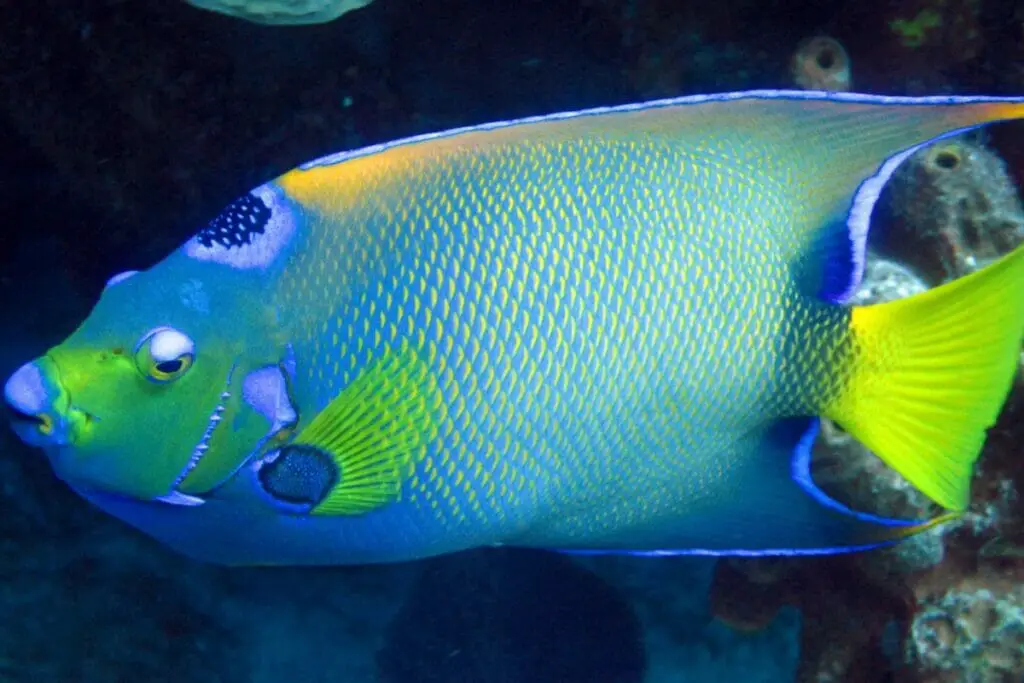
One of the first things that comes to mind when thinking about coral reef animals is their stunning colors and patterns. From the vibrant blues and yellows of the queen angelfish to the intricate designs on the shells of nudibranchs, these colors serve a variety of purposes.
Some animals use bright colors as a warning signal to potential predators, indicating that they are venomous or toxic. Others, like the mandarinfish, use their bold patterns to attract mates and communicate with others of their species.
Camouflage is another essential function of color in coral reef animals. By blending in with their surroundings, creatures like the scorpionfish and the octopus can avoid detection by both predators and prey. Some animals, like the leafy sea dragon, even resemble inanimate objects like seaweed to further conceal themselves.
The colors displayed by coral reef animals are produced by a combination of pigments and structural elements. Pigments are chemical compounds that absorb certain wavelengths of light and reflect others, creating specific colors. Structural colors, on the other hand, are produced by the physical arrangement of microscopic structures that interfere with light, like the iridescent scales of some fish.
Importance in the Ecosystem
Coral reef animals play crucial roles in maintaining the balance and health of these delicate ecosystems. Herbivorous fish, like parrotfish and surgeonfish, help to control algae growth on the reef. Without these grazers, algae could quickly overgrow and smother coral polyps, disrupting the foundation of the reef.
Predatory fish, such as sharks and groupers, are essential for regulating populations of smaller fish and maintaining the balance of the food web. By keeping prey populations in check, these predators help to prevent any one species from becoming too dominant and disrupting the ecosystem.
Filter-feeding animals, like sponges and giant clams, play a vital role in keeping the water clear and cycling nutrients within the reef. As they filter water for food, these animals remove excess particles and nutrients that could otherwise accumulate and harm the ecosystem. Some sponges can filter up to 50,000 times their own volume of water in a single day!
The complex relationships between coral reef animals, from the tiniest plankton to the largest predators, create a delicate balance that is essential for the survival of the entire ecosystem. Each species plays a unique and vital role, and the loss of even one can have far-reaching consequences for the health of the reef.
In conclusion, the animals that inhabit coral reefs are not only visually stunning but also possess fascinating adaptations, behaviors, and relationships that allow them to thrive in these diverse ecosystems.
From the symbiotic partnerships between clownfish and sea anemones to the crucial roles of herbivores and filter-feeders in maintaining the health of the reef, each animal contributes to the complex web of life that makes coral reefs so special.
As we continue to study and appreciate these remarkable creatures, we must also recognize the importance of protecting the delicate habitats they call home.
Threats to Coral Reef Animals and Conservation Efforts
Despite their incredible beauty and biodiversity, coral reefs and the animals that inhabit them face numerous threats that jeopardize their survival. From the global impacts of climate change to localized issues like overfishing and pollution, these fragile ecosystems are under constant pressure.
The consequences of these threats extend beyond the coral reefs themselves, affecting the livelihoods of millions of people who depend on them for food, income, and protection from coastal erosion. In response to these challenges, various conservation efforts have been implemented to safeguard coral reef animals and their habitats for future generations.
Climate Change and Coral Bleaching
One of the most significant threats to coral reefs is climate change, particularly the rising ocean temperatures associated with global warming. When water temperatures become too high, coral polyps experience stress and expel the symbiotic algae that live within their tissues. This process, known as coral bleaching, causes the coral to turn white and can lead to the death of the coral if the stress persists.
Coral bleaching events have become more frequent and severe in recent years, with mass bleaching events affecting reefs worldwide. The loss of coral not only impacts the coral polyps themselves but also the countless animals that depend on the reef for shelter and food. Fish, crustaceans, and other invertebrates may lose their homes and feeding grounds, leading to declines in their populations.
Overfishing and Destructive Fishing Practices

Overfishing is another major threat to coral reef animals, as it can disrupt the delicate balance of the reef ecosystem. When key species like herbivorous fish and top predators are removed in excess, it can lead to cascading effects throughout the food web.
For example, the removal of herbivorous fish can allow algae to overgrow and smother coral, while the absence of top predators can lead to unchecked population growth of their prey species.
In addition to overfishing, some fishing practices can cause direct damage to coral reefs. Dynamite fishing, which involves using explosives to stun or kill fish, can shatter coral and devastate reef structures. Similarly, cyanide fishing, which uses toxic chemicals to stun fish for capture, can poison coral and other reef animals.
Pollution and Sedimentation
Pollution and sedimentation from land-based sources also pose significant threats to coral reef animals. Agricultural runoff, sewage, and plastic waste can introduce harmful chemicals, nutrients, and debris into reef waters, affecting the health and survival of coral and other reef organisms.
Coastal development and deforestation can lead to increased sedimentation in reef waters, as soil and debris are washed into the ocean. This sediment can smother coral, reducing its ability to photosynthesize and grow. Sedimentation can also reduce the amount of light reaching the reef, impacting the entire ecosystem that depends on the coral for structure and nutrients.
Invasive Species
Invasive species can also wreak havoc on coral reef ecosystems by outcompeting native species for resources and disrupting the natural balance of the reef. In the Atlantic and Caribbean, the introduction of lionfish has had devastating impacts on native fish populations.
Lionfish have few natural predators in these regions and can consume large numbers of juvenile fish, reducing the abundance and diversity of native species.
Another example of an invasive species affecting coral reefs is the crown-of-thorns starfish. In some regions, population explosions of these starfish have led to the decimation of coral colonies, as the starfish feed on coral polyps and can quickly destroy large sections of the reef.
Protected Areas and Marine Reserves
Establishing protected areas and marine reserves is a crucial strategy for safeguarding coral reef animals and their habitats. These designated areas can help regulate human activities, such as fishing and tourism, to minimize their impact on the reef ecosystem. By creating zones with varying levels of protection, marine reserves can allow for the recovery of overexploited species and the preservation of critical habitats.
Examples of successful marine protected areas include:
- The Great Barrier Reef Marine Park in Australia, which covers an area of 344,400 square kilometers and includes a range of protective zones to balance conservation and sustainable use.
- The Papahānaumokuākea Marine National Monument in Hawaii, which is the largest contiguous fully protected conservation area in the United States, encompassing 1,508,870 square kilometers of ocean and coral reefs.
These protected areas not only benefit coral reef animals but also support local communities by providing opportunities for sustainable tourism, fisheries, and other economic activities.
Sustainable Tourism and Eco-Friendly Practices
Sustainable tourism and eco-friendly practices play a vital role in protecting coral reef animals while allowing people to enjoy and learn about these incredible ecosystems. Responsible tourism can help raise awareness about the importance of coral reefs and generate funds for conservation efforts through park fees, guided tours, and other activities.
Some examples of eco-friendly practices in coral reef tourism include:
- The use of mooring buoys to prevent anchor damage to coral reefs
- Guided snorkeling tours that educate visitors about reef ecology and proper behavior
- The promotion of reef-safe sunscreen to reduce the introduction of harmful chemicals into reef waters
By adopting these practices, the tourism industry can minimize its impact on coral reefs and contribute to the protection of the animals that call them home.
Research and Monitoring Programs
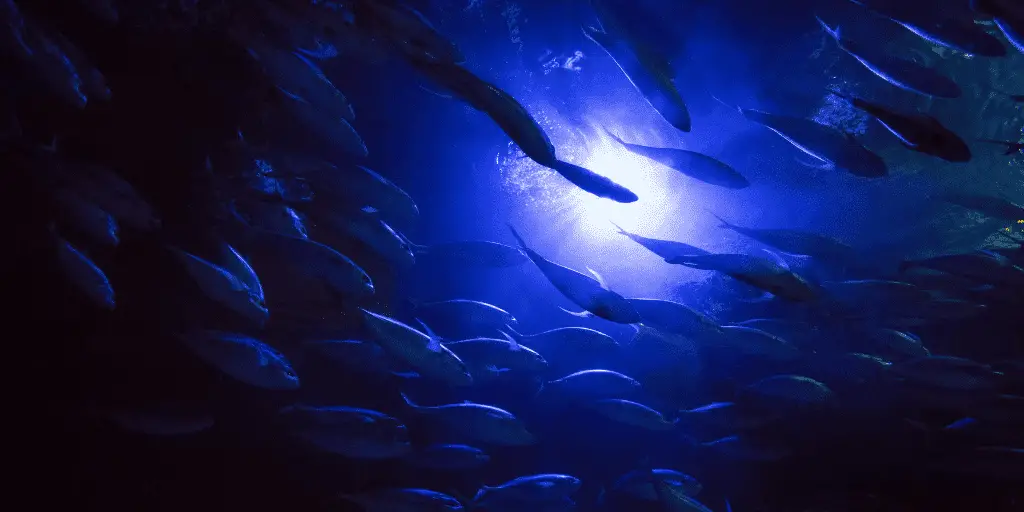
Research and monitoring programs are essential for understanding the threats facing coral reef animals and developing effective strategies for their conservation. Scientific studies can provide valuable insights into the health and dynamics of reef ecosystems, as well as the impacts of human activities and environmental changes.
Various technologies are used in coral reef research, including:
- Satellite imaging to monitor changes in reef cover and ocean temperatures over large areas
- Underwater surveys to assess the abundance and diversity of reef species
- Genetic analysis to study the connectivity and resilience of coral populations
The data gathered through these research and monitoring efforts can inform management decisions, such as the establishment of protected areas, fishing regulations, and restoration projects.
Public Awareness and Education Initiatives
Raising public awareness about the importance of coral reefs and the threats they face is crucial for building support for conservation efforts. Education initiatives can help foster a sense of stewardship among individuals and communities, encouraging them to take action to protect these valuable ecosystems.
Examples of public awareness and education initiatives include:
- Outreach programs that engage local communities in coral reef conservation and sustainable resource management
- Integration of coral reef ecology into school curricula to educate the next generation about the importance of these ecosystems
- Media campaigns that highlight the beauty and value of coral reefs and the urgent need for their protection
By increasing public understanding and appreciation of coral reefs and the animals that inhabit them, these initiatives can help drive the necessary changes in behavior and policy to ensure their long-term survival.
The threats facing coral reef animals are complex and multifaceted, requiring a comprehensive approach to conservation that addresses both global and local pressures.
Through a combination of protected areas, sustainable practices, research, and public engagement, we can work towards safeguarding these incredible ecosystems and the diverse array of life they support.
By taking action to protect coral reefs and their inhabitants, we not only preserve a vital part of our planet’s natural heritage but also ensure the well-being of the countless communities that depend on them.
Frequently Asked Questions
How do coral reef animals adapt to the changing climate and increasing ocean temperatures?
Many coral reef animals have limited ability to adapt to rapid changes in ocean temperatures. However, some species of coral and fish have shown signs of acclimatization or have migrated to cooler waters to cope with the changing conditions.
What can individuals do to help protect coral reef animals and their habitats?
Individuals can contribute to coral reef conservation by making sustainable seafood choices, using reef-safe sunscreen, supporting conservation organizations, and reducing their carbon footprint to combat climate change.
How do coral reef animals benefit humans and local communities?
Coral reef animals provide numerous benefits to humans, including food security through fisheries, income from tourism, and coastal protection from storms and erosion. Many local communities rely on healthy coral reef ecosystems for their livelihoods and well-being.
What role do coral reef animals play in the development of new medicines and medical treatments?
Coral reef animals are a rich source of bioactive compounds that have shown potential for treating various diseases, including cancer, HIV, and inflammatory conditions. Scientists continue to explore the medicinal properties of reef organisms to develop new drugs and therapies.
How can technology and innovation contribute to the conservation of coral reef animals?
Advanced technologies such as satellite imaging, underwater drones, and artificial intelligence can help monitor coral reef health, track changes, and inform conservation efforts. Innovative approaches like coral restoration using 3D printing and gene banking can also support the preservation of coral reef animals.
- Wild Animals in Costa Rica: A Biodiverse Paradise - 2024-05-16
- Animals That Live in the Rainforest: A Diverse Wonder - 2024-05-15
- Animals in the Safari: A Captivating African Adventure - 2024-05-15



